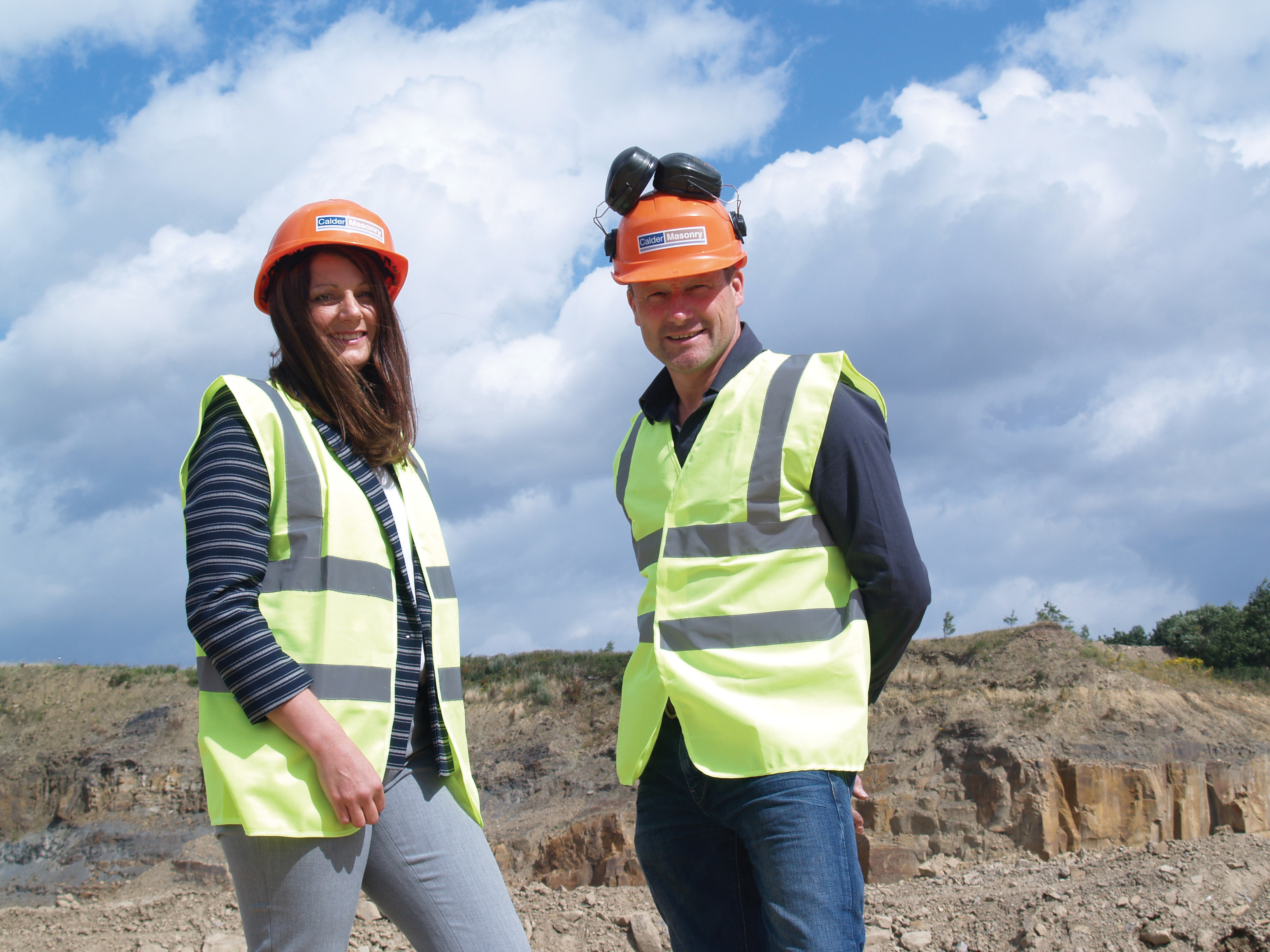Former apprentice returns to take over Woodkirk production
Ian Howgate served his stonemasonry apprenticeship at Britannia Quarries in Leeds when it was Pawsons Bros Ltd 30 years ago. Now he’s back to run it. NSS visited him at the quarry.
Thirty years ago, as an 18-year-old, Ian Howgate started an apprenticeship as a stonemason at Britannia Quarries in Leeds. Now he is back. And this time he’s in charge, with his wife and fellow Director Nicola beside him.
In the intervening years, Ian Howgate had started his own business, Calder Masonry, which in April secured sole rights to the well-known Woodkirk grey / buff sandstone extracted from Britannia Quarries in Morley, Leeds.
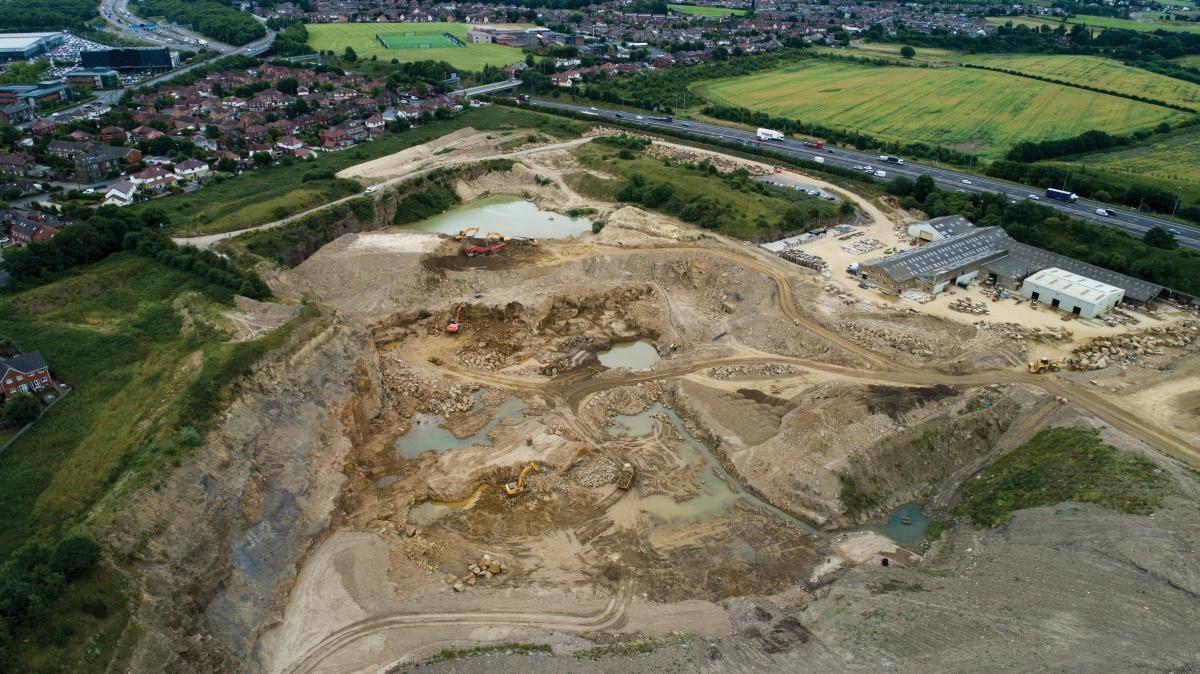 The site had deteriorated somewhat over the years. The offices had been abandoned and personnel had been moved into a portable cabin. Ian wanted to move Calder on to the site and his priority was to make it more presentable. He has been modernising the factory and renovating the offices, built, of course, of the stone onsite, which should make them a good advertisement for the stone in themselves. He is now turning part of the ground floor into a showroom, which Britannia Quarries once had.
The site had deteriorated somewhat over the years. The offices had been abandoned and personnel had been moved into a portable cabin. Ian wanted to move Calder on to the site and his priority was to make it more presentable. He has been modernising the factory and renovating the offices, built, of course, of the stone onsite, which should make them a good advertisement for the stone in themselves. He is now turning part of the ground floor into a showroom, which Britannia Quarries once had.
Ian’s memories of Britannia Quarries go back even further than when he started his apprenticeship because his father was the factory manager there and Ian had been taken on to the site since he was four. A bit later he used to charge up the batteries for the forklifts.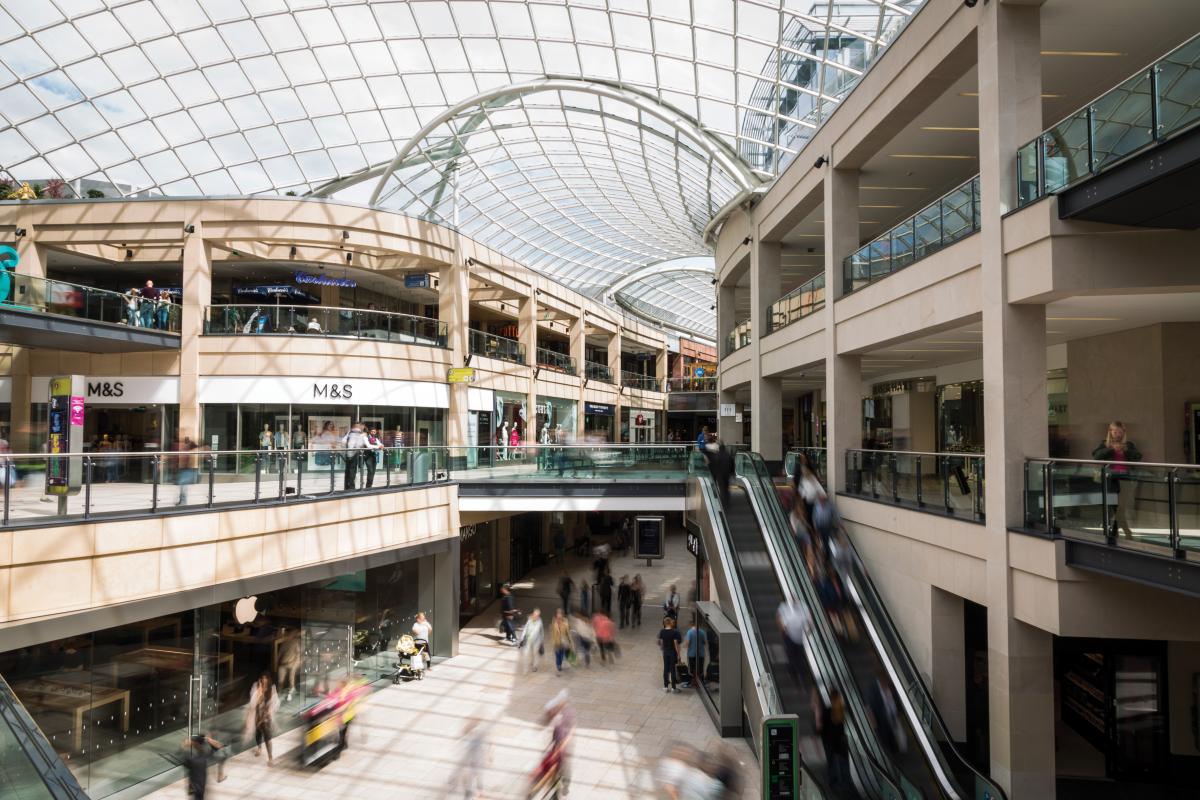
Ian always admired the work of the masons. He remembers the family’s neighbour, Roland Moss, who also worked at Britannia, coming home in the evenings and carving stone in his home workshop. That inspired Ian to start carving stone for himself.
As an apprentice at Britannia Quarries, Ian also attended York College, where he gained his Advanced Masonry qualifications.
He and Nicola got together when Ian started his stonemasonry apprenticeship and have been together ever since, getting married in 1996.
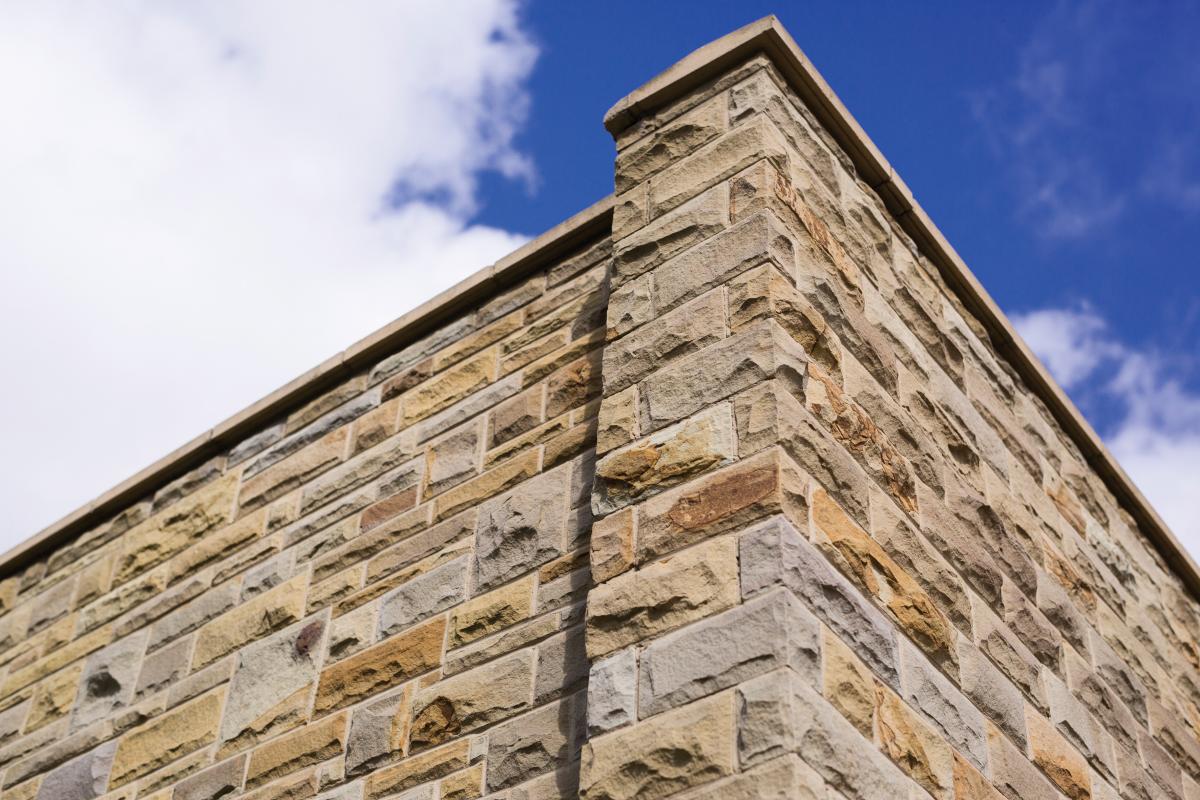 At the age of 24 in 1992 Ian became the factory production manager. But the job lasted only two years before he was made redundant as Britannia Quarries went through a lean time during the economic doldrums that stretched on throughout the first half of the 1990s.
At the age of 24 in 1992 Ian became the factory production manager. But the job lasted only two years before he was made redundant as Britannia Quarries went through a lean time during the economic doldrums that stretched on throughout the first half of the 1990s.
Ian was offered stone in lieu of redundancy payment, which he accepted as a way of starting his own business. As it turned out, it could hardly have come at a better time, as the economy was just about to start its period of sustained growth up to and beyond the millennium.
Ian opened his masonry yard in Dewsbury, next to the River Calder, the water from which he used for his saws and the name of which he used for his business, as he still does.
Inevitably, when he started he was happy to take any work that came along as long as it used the local stones, which he has always stuck to. His early commissions included some high end carving for gardens, newbuild and restoration work.
Although he had taught himself carving, with a bit of guidance from his neighbour Roland Moss, he had a natural flair for it and his work was in demand.
Some of it went on to fireplaces and he built up a reputation for them, eventually creating a range, with each of the designs named after a different river in Yorkshire. It is still an important part of the Calder Masonry mix.
As the Calder Masonry reputation grew, the firm became busier. It opened a showroom and went down a more commercial route, concentrating on the high end domestic market, building bespoke houses and extensions. “I kept it quite niche,” says Ian. “We got a reputation for doing good quality work.”
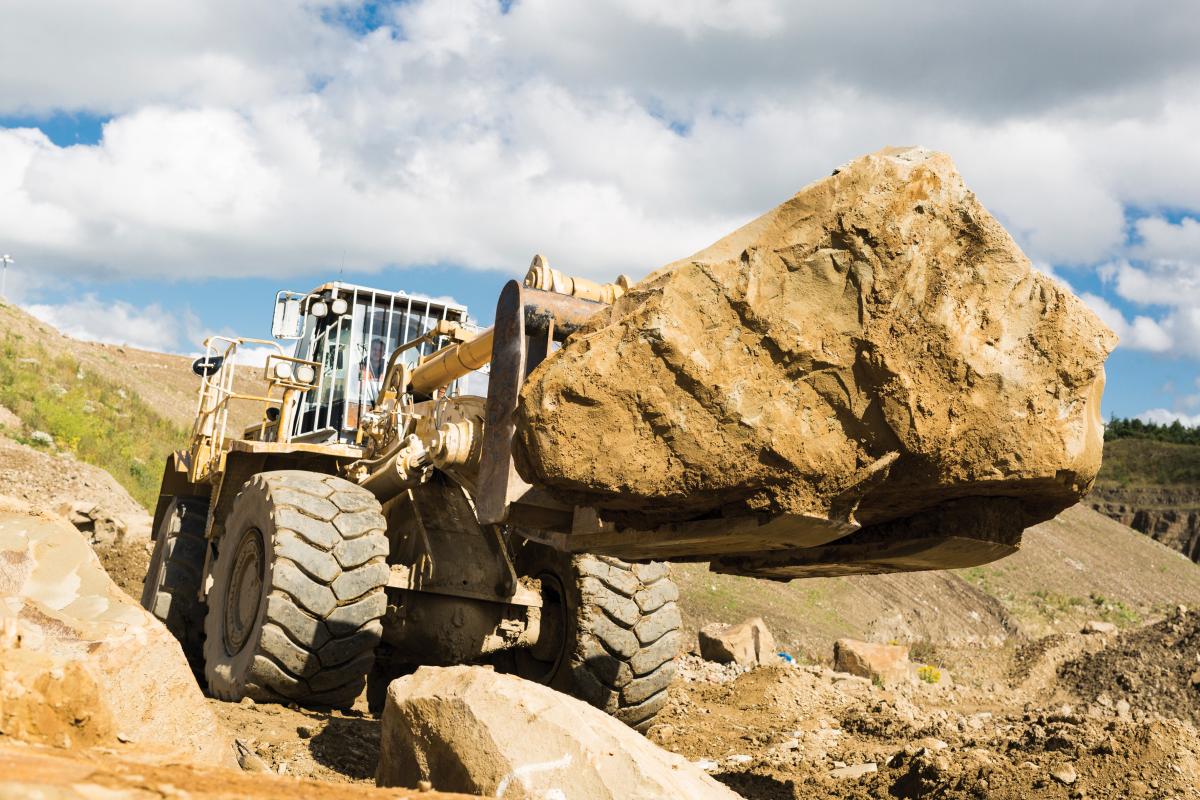 Then this year the owner of Britannia Quarries was looking for someone to run the operation there. As Ian had known the owner for 24 years, the conversation about Calder Masonry taking charge of the extraction and sale of Woodkirk stone from the quarry was relatively straightforward.
Then this year the owner of Britannia Quarries was looking for someone to run the operation there. As Ian had known the owner for 24 years, the conversation about Calder Masonry taking charge of the extraction and sale of Woodkirk stone from the quarry was relatively straightforward.
Ian did not want to run two premises. But as he was renting his workshop and showroom in Dewsbury and was not tied down by onerous extrication clauses, he was able to move his business into Britannia Quarries fairly easily, taking control of the extraction and sale of Woodkirk Stone. The investment in larger production facilities has given Calder Masonry the opportunity to take on both public realm and large commercial projects as it now has guaranteed supplies of top quality stone, although it will continue to offer a full masonry service from the new factory in a range of stones as well as Woodkirk.
“It’s a big move but it has come at the right time for me,” says Ian.
His priority was to ensure Calder Masonry could continue to process stone and meet orders, so investment in the premises, the factory and the site was paramount.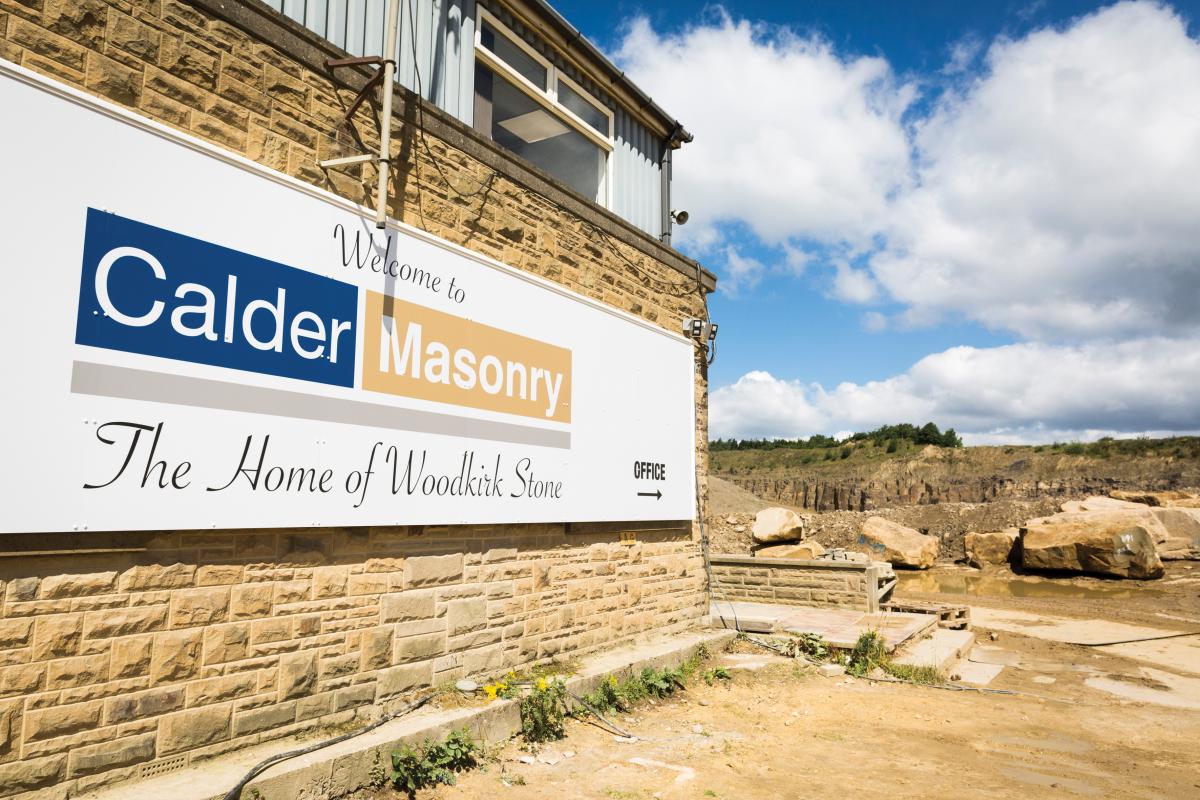
“It was fairly run down and dilapidated,” he says, “but I could see behind the mess. It is like carving: I can see the lion I am going to carve where others only see the rock.”
He brought the machinery he had used in his workshop in Dewsbury with him, taking the opportunity of the move to have it reconditioned before it was installed. He also had the three heavyweight Gaspari Menotti gang saws at the quarry reconditioned and there are other saws and cropping lines for walling in the factory. The machinery uses a lot of water and Calder is currently building a new water management system to recirculate the water.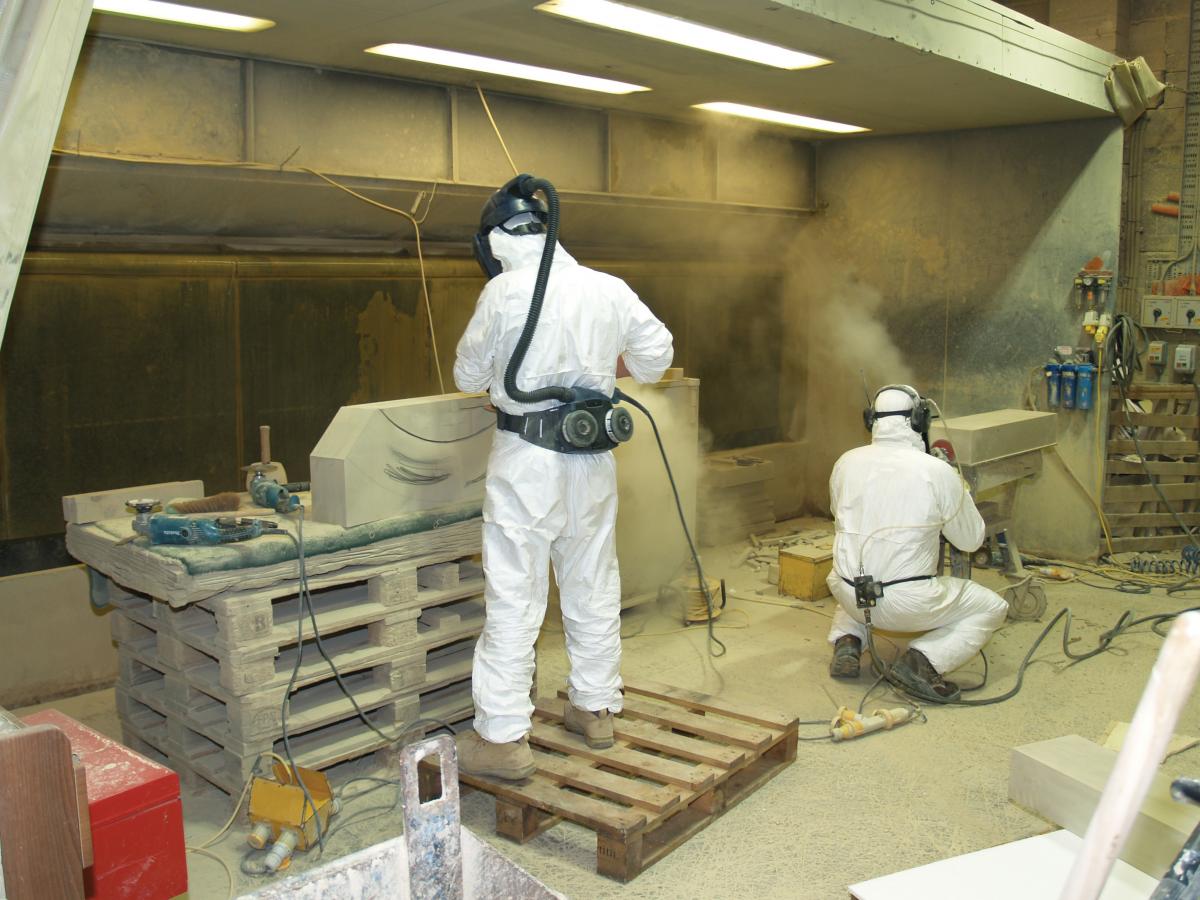
The machinery brought from Dewsbury includes an ASM bridge saw and a Wells Wellcut 1800. Two more 1600 Wellcuts are on order. A new 16tonne Kalmar and a fleet of Linde forklifts have been bought and new skylights have been put into the factory roof to brighten the working area.
Three masons came with Calder Masonry from Dewsbury and one has been at Britannia since Ian served his apprenticeship there. Two more have been recruited and Calder plans to offer stonemasonry apprenticeship opportunities to train more. The masons work in cubicles with roofs on them to channel the dust into powerful and effective water suppressed extraction units and they wear full PPE when using spinners to protect them from the high respirable crystalline silica (RCS) content dust.
Britannia Quarries is a 40-acre site opened in 1841 by Daniel Pawson, one of the original Pawson Brothers. It is constrained by a road on one side and housing all around. There is one new area going back towards the road yet to be worked. The factory will also eventually be moved to access the stone underneath it. That gives the quarry a life of 15-20 years at the rate of extraction hoped for.
Calder Masonry now employs 29 people in the factory and offices with five people working in the quarry itself. They include six people who moved from Dewsbury with Calder and five more who have been newly recruited. Ian and Nicola are comfortable with the staffing level they now have. They say they still have some work to do on the premises, but are delighted with the progress so far made.

